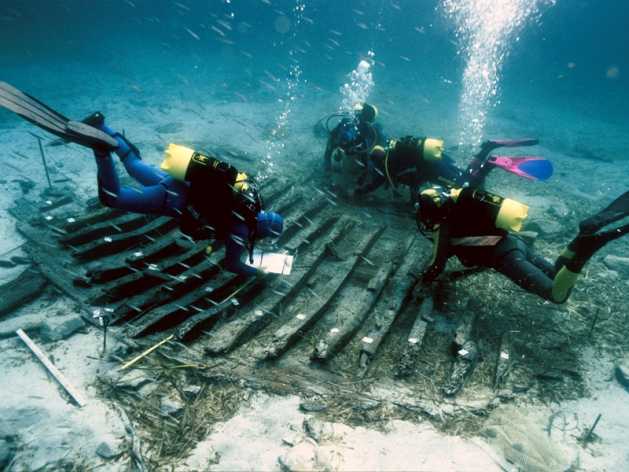Friday, April 19, 2024
News and Views from the Global South
U.N. Focuses on Underwater Cultural Heritage of Small Islands

Wreck in Baia Salinedda, Italy. Credit: E. Trainito/UNESCO
- Large amounts of underwater shipwrecks are bringing new opportunities to Small Island Developing States (SIDS) through scientific cooperation and tourism, according to the U.N. Educational, Scientific and Cultural Organization (UNESCO).
“These wrecks are time capsules of history as they have carried with them the technology, material culture, and objects from their current time, place, and culture of origin,” said Reginald Murphy, Secretary-General of the Antigua and Barbuda National Commission for UNESCO, during a side event Tuesday to discuss the potentials, preservation and use of Underwater Cultural Heritage in SIDS.
The Atlantic slave trade that brought slaves from Africa to the Americas during the 16th to 19th century, for example, has left an abundance of underwater remnants ideal for research, education and development. Anyone of African decent living on Turks and Caicos Islands (islands located 550 miles southeast of Miami, Florida) can trace their ancestry to the 193 slaves who survived the wreck of the slave ship “Trouvadore” in 1841, according to Murphy.
With the Third International Conference on SIDS, scheduled to take place in Samoa from Sep.1 to 4, UNESCO is focusing on the protection and preservation of SIDS’ underwater cultural heritage. According to the Paris-based UN agency, every dollar invested in the protection and valorization of a heritage site helps increase economic activity around it by a factor of up to 12, depending on the location and development.
Although there are numerous sunken cities, shipwrecks and prehistoric sites that have potential for sustainable tourism and resources in SIDS, they have not been researched or protected yet.
Della Ireton, associate director of Florida Public Archaeology Network at the University of West Florida, said there are different ways for SIDS to explore their resources, such as cooperation with academic institutes.
Ireton relies heavily on trained student volunteers for her work, as well as specialists who are involved in creating the partnership with small islands.
Due to economic constraints, few of the SIDS can afford to raise shipwrecks from the seabed, like what the British government did for the 16th century warship Mary Rose. However, it is already a big step for SIDS to be aware of the importance of protection and preservation, according to Ireton.
“Maybe they are not ready just yet to work on underwater heritage tourism, but at least they are thinking about it. If they are protecting these sites then they already have potential for the future,” Ireton said.

 Print
Print



